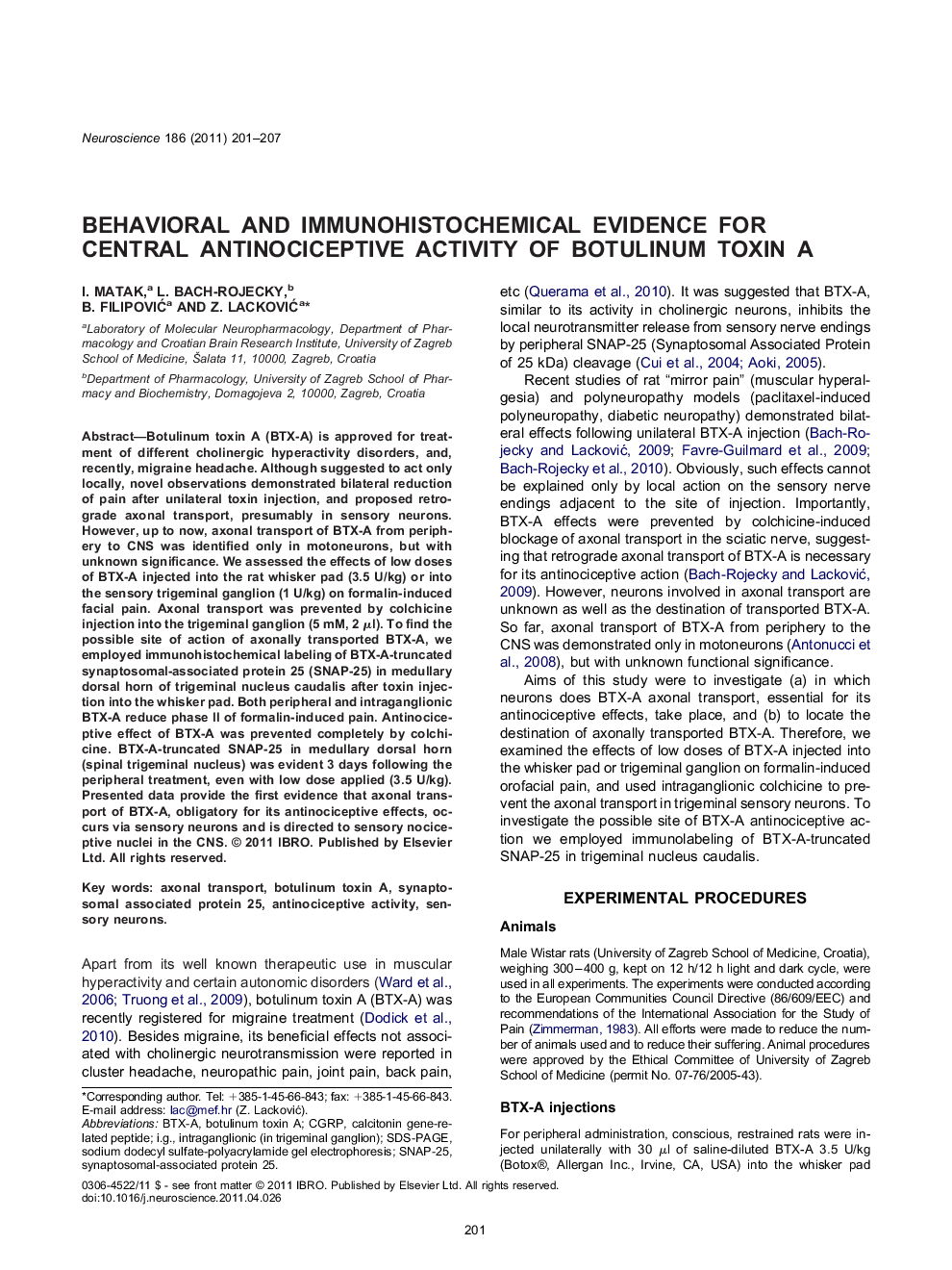| Article ID | Journal | Published Year | Pages | File Type |
|---|---|---|---|---|
| 4338882 | Neuroscience | 2011 | 7 Pages |
Botulinum toxin A (BTX-A) is approved for treatment of different cholinergic hyperactivity disorders, and, recently, migraine headache. Although suggested to act only locally, novel observations demonstrated bilateral reduction of pain after unilateral toxin injection, and proposed retrograde axonal transport, presumably in sensory neurons. However, up to now, axonal transport of BTX-A from periphery to CNS was identified only in motoneurons, but with unknown significance. We assessed the effects of low doses of BTX-A injected into the rat whisker pad (3.5 U/kg) or into the sensory trigeminal ganglion (1 U/kg) on formalin-induced facial pain. Axonal transport was prevented by colchicine injection into the trigeminal ganglion (5 mM, 2 μl). To find the possible site of action of axonally transported BTX-A, we employed immunohistochemical labeling of BTX-A-truncated synaptosomal-associated protein 25 (SNAP-25) in medullary dorsal horn of trigeminal nucleus caudalis after toxin injection into the whisker pad. Both peripheral and intraganglionic BTX-A reduce phase II of formalin-induced pain. Antinociceptive effect of BTX-A was prevented completely by colchicine. BTX-A-truncated SNAP-25 in medullary dorsal horn (spinal trigeminal nucleus) was evident 3 days following the peripheral treatment, even with low dose applied (3.5 U/kg). Presented data provide the first evidence that axonal transport of BTX-A, obligatory for its antinociceptive effects, occurs via sensory neurons and is directed to sensory nociceptive nuclei in the CNS.
Graphical AbstractAppearance of cleaved SNAP-25 in ipsilateral medullar dorsal horn (trigeminal nucleus caudalis) following botulinum toxin A (15 U/kg) injection into the whisker pad.Highlights▶Peripheral and intraganglionic BTX-A reduce formalin-induced facial pain. ▶Antinociceptive effect of BTX-A depends on axonal transport in trigeminal neurons. ▶After peripheral BTX-A application, cleaved SNAP-25 appears in medullary dorsal horn. ▶Central cleaved SNAP-25 appears with delay and at low peripheral BTX-A dose. ▶Antinociceptive effect of peripheral BTX-A is coupled with SNAP-25 cleavage in CNS.Figure optionsDownload full-size imageDownload high-quality image (110 K)Download as PowerPoint slide
